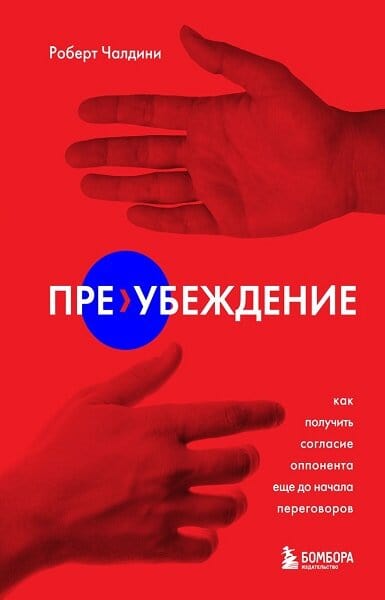Шрифт:
Закладка:
3669
Redberg RF, Katz MH. Statins for primary prevention: the debate is intense, but the data are weak. JAMA. 2016;316(19):1979–81. https://pubmed.ncbi.nlm.nih.gov/27838702/
3670
Ornish D, Scherwitz LW, Billings JH, et al. Intensive lifestyle changes for reversal of coronary heart disease. JAMA. 1998;280(23):2001–7. https://pubmed.ncbi.nlm.nih.gov/9863851/
3671
Kelly J, Karlsen M, Steinke G. Type 2 diabetes remission and lifestyle medicine: a position statement from the American College of Lifestyle Medicine. Am J Lifestyle Med. 2020;14(4):406–19. https://pubmed.ncbi.nlm.nih.gov/33281521/
3672
Esselstyn CB Jr, Gendy G, Doyle J, Golubic M, Roizen MF. A way to reverse CAD? J Fam Pract. 2014;63(7):356–64b. https://pubmed.ncbi.nlm.nih.gov/25198208/
3673
Hochholzer W, Giugliano RP. Lipid lowering goals: back to nature? Ther Adv Cardiovasc Dis. 2010;4(3):185–91. https://pubmed.ncbi.nlm.nih.gov/20400493/
3674
Steinberg D, Witztum JL. Inhibition of PCSK9: a powerful weapon for achieving ideal LDL cholesterol levels. Proc Natl Acad Sci U S A. 2009;106(24):9546–7. https://pubmed.ncbi.nlm.nih.gov/19506257/
3675
Cohen J, Pertsemlidis A, Kotowski IK, Graham R, Garcia CK, Hobbs HH. Low LDL cholesterol in individuals of African descent resulting from frequent nonsense mutations in PCSK9. Nat Genet. 2005;37(2):161–5. https://pubmed.ncbi.nlm.nih.gov/15654334/
3676
Jaworski K, Jankowski P, Kosior DA. PCSK9 inhibitors – from discovery of a single mutation to a groundbreaking therapy of lipid disorders in one decade. Arch Med Sci. 2017;13(4):914–29. https://pubmed.ncbi.nlm.nih.gov/28721159/
3677
Qamar A, Bhatt DL. Effect of low cholesterol on steroid hormones and vitamin E levels: just a theory or real concern? Circ Res. 2015;117(8):662–4. https://pubmed.ncbi.nlm.nih.gov/26405182/
3678
Blom DJ, Djedjos CS, Monsalvo ML, et al. Effects of evolocumab on vitamin E and steroid hormone levels: results from the 52-week, phase 3, double-blind, randomized, placebo-controlled DESCARTES study. Circ Res. 2015;117(8):731–41. https://pubmed.ncbi.nlm.nih.gov/26228031/
3679
Qamar A, Libby P. Low-density lipoprotein cholesterol after an acute coronary syndrome: how low to go? Curr Cardiol Rep. 2019;21(8):77. https://pubmed.ncbi.nlm.nih.gov/31250329/
3680
Hochholzer W, Giugliano RP. Lipid lowering goals: back to nature? Ther Adv Cardiovasc Dis. 2010;4(3):185–91. https://pubmed.ncbi.nlm.nih.gov/20400493/
3681
Glueck CJ, Gartside P, Fallat RW, Sielski J, Steiner PM. Longevity syndromes: familial hypobeta and familial hyperalpha lipoproteinemia. J Lab Clin Med. 1976;88(6):941–57. https://pubmed.ncbi.nlm.nih.gov/186545/
3682
Packard CJ. LDL cholesterol: How low to go? Trends Cardiovasc Med. 2018;28(5):348–54. https://pubmed.ncbi.nlm.nih.gov/29336946/
3683
Gotto AM. Low-density lipoprotein cholesterol and cardiovascular risk reduction: how low is low enough without causing harm? JAMA Cardiol. 2018;3(9):802–3. https://pubmed.ncbi.nlm.nih.gov/30073330/
3684
Packard CJ. LDL cholesterol: How low to go? Trends Cardiovasc Med. 2018;28(5):348–54. https://pubmed.ncbi.nlm.nih.gov/29336946/
3685
Steinberg D. The cholesterol controversy is over. Why did it take so long? Circulation. 1989;80(4):1070–8. https://pubmed.ncbi.nlm.nih.gov/2676235/
3686
Morgan DJ, Dhruva SS, Coon ER, Wright SM, Korenstein D. 2018 update on medical overuse. JAMA Intern Med. 2019;179(2):240–6. https://pubmed.ncbi.nlm.nih.gov/30508032/
3687
Lyu H, Xu T, Brotman D, et al. Overtreatment in the United States. PLoS One. 2017;12(9):e0181970. https://pubmed.ncbi.nlm.nih.gov/28877170/
3688
Rothberg MB, Scherer L, Kashef MA, et al. The effect of information presentation on beliefs about the benefits of elective percutaneous coronary intervention. JAMA Intern Med. 2014;174(10):1623–9. https://pubmed.ncbi.nlm.nih.gov/25156687/
3689
Rothberg MB, Sivalingam SK, Ashraf J, et al. Summaries for patients: patients’ and cardiologists’ beliefs about a common heart procedure. Ann Intern Med. 2010;153(5):I46. https://pubmed.ncbi.nlm.nih.gov/20820040/
3690
Laukkanen JA, Kunutsor SK, Lavie CJ. Percutaneous coronary intervention versus medical therapy in the treatment of stable coronary artery disease: an updated meta-analysis of contemporary randomized controlled trials. J Invasive Cardiol. 2021;33(8):E647–57. https://pubmed.ncbi.nlm.nih.gov/34338654/
3691
Harvard Heart Letter. COURAGE to make choices. Harvard Health Publishing. https://www.health.harvard.edu/newsletter_article/courage-to-make-choices. Published June 1, 2007. Accessed April 5, 2022.; https://www.health.harvard.edu/newsletter_article/courage-to-make-choices
3692
Al-Lamee R, Thompson D, Dehbi HM, et al. Percutaneous coronary intervention in stable angina (ORBITA): a double-blind, randomised controlled trial. Lancet. 2018;391(10115):31–40. https://pubmed.ncbi.nlm.nih.gov/29103656/
3693
Kolata G. ‘Unbelievable’: heart stents fail to ease chest pain. The New York Times. https://www.nytimes.com/2017/11/02/health/heart-disease-stents.html. Published November 2, 2017. Accessed April 5, 2022.; https://www.nytimes.com/2017/11/02/health/heart-disease-stents.html
3694
Al-Lamee R, Thompson D, Dehbi HM, et al. Percutaneous coronary intervention in stable angina (ORBITA): a double-blind, randomised controlled trial. Lancet. 2018;391(10115):31–40. https://pubmed.ncbi.nlm.nih.gov/29103656/
3695
Doenst T, Haverich A, Serruys P, et al. PCI and CABG for treating stable coronary artery disease: JACC review topic of the week. J Am Coll Cardiol. 2019;73(8):964–76. https://pubmed.ncbi.nlm.nih.gov/30819365/
3696
Rothberg MB. Coronary artery disease as clogged pipes: a misconceptual model. Circ Cardiovasc Qual Outcomes. 2013;6(1):129–32. https://pubmed.ncbi.nlm.nih.gov/23322809/
3697
Trumbo PR, Shimakawa T. Tolerable upper intake levels for trans fat, saturated fat, and cholesterol. Nutr Rev. 2011;69(5):270–8. https://pubmed.ncbi.nlm.nih.gov/21521229/
3698
World Health Organization. Countdown to 2023: WHO report on global trans-fat elimination 2021. Geneva: 2021.; https://www.who.int/publications/i/item/9789240031876
3699
Wanders AJ, Zock PL, Brouwer IA. Trans fat intake and its dietary sources in general populations worldwide: a systematic review. Nutrients. 2017;9(8):E840. https://pubmed.ncbi.nlm.nih.gov/28783062/
3700
Kahle L, Krebs-Smith SM, Reedy J, Rodgers AB, Signes C. Identification of top food sources of various food components. Epidemiology and Genomics Research Program. https://epi.grants.cancer.gov/diet/foodsources/top-food-sources-report-02212020.pdf. Updated November 30, 2019. Accessed April 5, 2022.; https://epi.grants.cancer.gov/diet/foodsources/top-food-sources-report-02212020.pdf
3701
Xu Z, McClure ST, Appel LJ. Dietary cholesterol intake and sources among U.S. adults: results from National Health and Nutrition Examination Surveys (NHANES), 2001–2014. Nutrients. 2018;10(6):E771. https://pubmed.ncbi.nlm.nih.gov/29903993/





